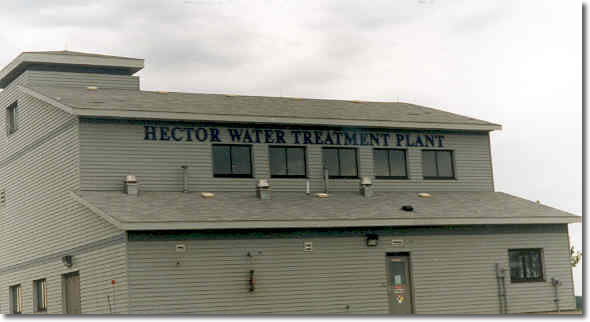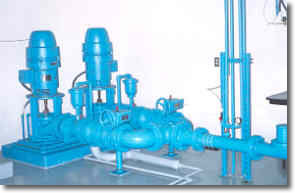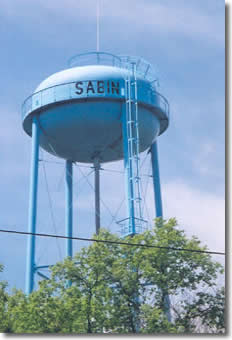Drinking Water Protection
- Drinking Water Protection Home
- About Us
- A-Z Index of Contaminants in Water
- Community Public Water Supply
- Drinking Water Grants and Loans
- Drinking Water Institute
- Drinking Water in Schools and Child Cares
- Drinking Water Revolving Fund
- Laws and Rules
- Noncommunity Public Water Supply
- Source Water Protection
- Water Operator and Certification Training
- Drinking Water Protection Contacts
Related Topics
- Annual Reports
- Drinking Water Risk Communication Toolkit
- Drinking Water Protection External Resources
- Fact Sheets
- Forms
- Invisible Heroes Videos: Minnesota's Drinking Water Providers
- Noncom Notes Newsletter
- Sample Collection Procedures (videos, pictures, written instructions)
- Waterline Newsletter
Related Sites
- 10 States Standards
- Clean Water Fund
- Health Risk Assessment – Guidance Values and Standards for Water
- Minnesota Well Index
- Water and Health
- Wells and Borings
Environmental Health Division
Minnesota Systems Treat for Arsenic
From the Winter 1998-99 and Fall 2001 Waterlines
Quarterly Newsletter of the Minnesota Department of Health Public Water Supply Unit, Waterline
A complete list of feature stories can be found on the Waterline webpage.
Removing Arsenic in Hector
Arsenic is naturally occurring and also the result of human activity. In the latter category, arsenic has been used through the ages as a drug and as a poison. This century, arsenical compounds have been used as active ingredients in pesticides, herbicides, fungicides, cattle and sheep dips, desiccants, wood preservatives, and dyestuff.
In the 1930s, arsenic was used in a grasshopper control program conducted by the federal government. Outside of the central Minnesota town of Hector was a mixing station in which arsenic was combined with grain and corn to bait fields to combat the grasshopper infestation. Hector is also in an area where measurable results of naturally occurring arsenic are not unusual. Perhaps it was no surprise that analyses done by the Minnesota Department of Health between February 1978 and October 1982 showed elevated levels of arsenic with the highest concentrations in a well adjacent to the site of the former mixing station.
Hector’s source of raw water is a glacial drift 240 feet deep that acts as a “bowl” for wells to capture and hold the infiltrated water. However, it is a difficult area to locate a productive well, according to Jerome Schueller, the city’s water and wastewater superintendent. “It’s not like we’re on top of the Jordan aquifer. Water is precious out here. If there’s a problem, we have to deal with it. We don’t have options in terms of finding another source.” (In addition to challenges with arsenic, one of the city wells had methane gas. It has since been taken out of service and now serves as a backup for emergency purposes only.)
The city of Hector dealt with the problem by constructing the state’s first arsenic removal plant in the early 1990s. The plant significantly reduced the levels of arsenic in the finished water—and none too soon. Shortly after the plant went on-line in 1992, a new study was released that indicated a cancer risk from arsenic in drinking water along the lines of cancer risks from indoor radon and tobacco smoke. New technology also allowed for the detection of very small amounts of arsenic. The findings of these studies resulted in a court order for the U. S. Environmental Protection Agency (EPA) to revise its arsenic regulation. All indications are that by the turn of the century, the maximum contaminant level for arsenic in drinking water will be much more stringent than its current standard of 50 parts per billion (ppb).
The removal is achieved by the conversion of trivalent arsenic (As+3) to the pentavalent state (As+5) through aeration and the addition of potassium permanganate and ferric chloride. The aerator and the potassium permanganate oxidize the As+3 (arsenite) to As+5 (arsenate). The arsenate then adsorbs onto the floc created by the ferric chloride while in a 40,000-gallon detention tank for the next four to 12 hours. The precipitated floc then moves on to the filter, where the process continues.
“If it doesn’t happen in the detention tank,” explains Schueller, “we feed enough potassium permanganate to carry that magnesium dioxide into the filter itself and we get some removal in there, too. It bonds inside the filter, also.” The filter consists of 10 inches of anthracite, 20 inches ofIron-man media (charged sand), and 16 inches of support gravel on top of an 18½ -inch filter underdrain.
The process was effective in bringing the level of arsenic in the distribution system down to around 18 ppb, even though the levels remained high in the raw water. (The arsenic level in Well 3, the one nearest the site of the mixing station, averages around 83 ppb. Well 4 averages approximately 24 ppb. Well 4 is the city’s main well with Well 3 used mainly for backwashing.)
Even though the finished-water levels were well below the current maximum contaminant level for arsenic, Schueller was concerned that the city might still not be able to meet the stricter standards set in the new rule. (Indications are that the MCL for arsenic will be between 2 and 20 ppb.) Shortly after taking over the Hector plant in 1993, Schueller began working with Carus Chemical Company of Ottawa, Illinois, to explore the possibility of further reduction. The study concluded that altering the feed rate of the potassium permanganate could achieve that result.
Raising the potassium permanganate feed from 1.9 milligrams per liter to 3 milligrams per liter brought arsenic levels in the distribution system to only 4 parts per billion. Schueller adds that in addition to the effect it had on the arsenic, the adjustments helped with the manganese and iron, as well. “Residents no longer even have to use softeners,” he says.
An additional challenge posed by the arsenic removal is contaminated sludge. Much of the problem is alleviated by the recycling of most of the backwash water with only about 20 percent entering the sanitary sewer. Lime is then used to dilute the arsenic levels at the wastewater plant..
 |
 |
|
The Hector (above left) and Buffalo Lake (above right and below) Water Treatment Plants are the first among the first arsenic-removal facilities for drinking water in Minnesota.
|
|
 |
 |
Buffalo Lake Treats for Arsenic
As the drinking-water world awaits the final rule revision on arsenic, water utilities are taking steps to address the more stringent standard that will be adopted. The current maximum contaminant level (MCL) for arsenic is 50 parts per billion (ppb). None of the public water systems in Minnesota exceeds that level. However, it has been known for some time that the MCL is going to be significantly lowered, probably to between 2 and 20 ppb.
In 1992, the central Minnesota community of Hector became the first in the state to install treatment to reduce arsenic levels. Since that time, others have followed, including the water system in nearby Buffalo Lake, a town of about 750 people. Like Hector, Buffalo Lake is in an area where measurable amounts of naturally occurring arsenic are not unusual.
Buffalo Lake’s previous system consisted of a well and the addition of fluoride, phosphates, and chlorine. The phosphates were to sequester iron, which is at 2.3 parts per million (ppm) in the raw water. The arsenic level was between 46 and 48 ppb, below the existing standard (albeit barely) but well above the MCL proposed for the new arsenic rule. In addition to the arsenic, Buffalo Lake also wanted to address a problem with gas in the water—carbon dioxide at the well—and some aesthetic concerns.
City residents overwhelmingly passed a referendum in November 1998 to drill a new well and build a treatment plant, which would be funded entirely by user fees. Around this time, the Minnesota Department of Health created the Drinking Water Revolving Fund, intended to provide below-market-rate loans to water systems to make capital improvements necessary to maintain compliance with drinking water standards. Buffalo Lake applied for funds for a new well and treatment plant. The first year, they received the funds for the well but not the plant. They applied again the following year and received funding for the treatment plant.
The plant was designed with the primary goal of arsenic removal. Construction began with the well drilling in 1999. The old well is now used as a backup, and the well that previously had been used as a backup was sealed. Construction of the plant also commenced, and it went on-line in March 2000.
The treatment consists of an aeration tower to remove the gas, a detention basin, chemical addition of ferric chloride, and a pressure filter. It differs somewhat from the arsenic removal plant in nearby Hector, according to Public Works Director Dave Kienitz. Hector uses potassium permanganate as an oxidant while Buffalo Lake uses chlorine as an oxidant. Hector also has a gravity filter.
Kienitz says they were also having a problem with the filter losing media. “We lost a lot of media and had to do a raw water analysis to figure out what was going on and how much chlorine we’re supposed to be using,” he said. Responding to complaints of a chlorine smell from residents in one section of town, the system investigated and found that there wasn’t a high free chlorine level but that the total chlorine was high. “By adding chlorine, we ended up making chloramines,” Kienitz explained. “So we add sodium bisulfate to dechlorinate.” Because of the ammonia, they are trying to keep the total chlorine residual to 1 ppm.
The treatment has been effective at eliminating the carbon dioxide and reducing the iron to .1 ppm, and it has lowered the arsenic. However, arsenic levels are still at round 30 ppb, and Kienitz knows they have to bring them down more. He says they have an agreement that requires the filter supplier to get the arsenic down to 10 ppb. They may add potassium permanganate to the filter media as an oxidant and, if necessary, might try a different media.
Kienitz adds that the filter supplier wants to bring the iron level down even more and that, by doing so, they hope to see the arsenic levels drop further.
Note: In 2001, the final ruling on the new arsenic standard was made, setting the maximum contaminant level for arsenic, starting in 2006, at 10 parts per billion.
Go to > top.
Of Interest
Arsenic in Minnesota’s Well Water
